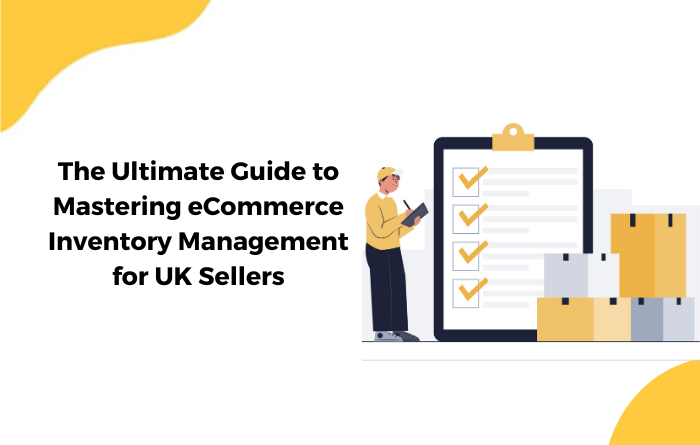
Essential Cash Flow Management Tips for Amazon FBA Sellers
Did you know that an astounding 82% of businesses close due to cash flow issues? Cash flow is often overlooked

Managing inventory effectively is the backbone of any thriving eCommerce business. But it’s not always smooth sailing; it can feel like a rollercoaster at times. Striking the perfect balance between keeping enough stock to avoid running out frequently and not overstocking your warehouse is crucial, all while keeping a close eye on your cash flow. 💸
At Guide Hustle, we believe that having a solid understanding of your finances is a key factor in mastering inventory management. When you’re familiar with your numbers, you can make smarter decisions about how much inventory to order and when to do so. 💡
In this blog, we’ll explore everything you need to know about inventory management, including:
Put simply, no inventory means no sales. 🚫
If your inventory management systems and processes aren’t up to par, it will impact every aspect of your business, particularly sales. Let’s illustrate this with an example:
Imagine running an eCommerce store that sells protein bars. Due to poor bookkeeping, you automatically ordered 500 bars six months ago. Fast forward four months, and sales are slow, leaving 425 protein bars languishing in your California warehouse. 😥
You were relying on more money and quicker sales this time around to cover rent and payroll. Now, you’re struggling to meet your financial obligations. A flash sale to clear out remaining inventory before it expires would help, but you don’t have the funds to run PPC ads. 💔
This may be an extreme example, but purchasing inventory without consulting accurate, up-to-date financial data can create a domino effect of problems, from lost revenue due to insufficient stock to excess inventory that goes unsold.
There are several accounting methods for managing inventory. We’ll discuss the three most popular below:
First In, First Out (FIFO) – This widely used method states that the inventory ordered first is sold first. Consequently, the last purchased inventory appears on your balance sheet.
Last In, First Out (LIFO) – With this method, the most recent items ordered are the first out. Some old-school accountants prefer LIFO as it can result in tax savings.
Weighted Average Method – Costs are assigned based on a weighted average. To calculate this, divide the cost of goods available for sale by the total number of units.
Given the intricacies of inventory forecasting and management, it’s crucial to have robust systems, processes, and tools in place. While it might be tempting to save money by managing inventory in spreadsheets or on paper, we don’t recommend going down the DIY route. 🙅♂️
If you only sell on your own website and not on any marketplaces, built-in inventory management on eCommerce platforms like Shopify, BigCommerce, or Magento may suffice. However, if you sell across multiple channels and marketplaces, using dedicated inventory management software (such as DEAR or Inventory Planner) can save you heaps of time and money. 🕒💰
Predicting how much product to order and when to order it can be one of the most challenging aspects of inventory management. That’s where inventory forecasting, or demand planning, comes into play. 🧠
Pro Tip: Using inventory management software can simplify inventory forecasting. 🌟
Forecasting enables you to develop sophisticated models that predict future demand based on sales projections, revenue and profit figures, financial reports, and existing inventory activity. It’s a powerful tool for making informed decisions about inventory management. 🔮
Pro Tip: To account for seasonality, use your highest month of sales (e.g., December) as the baseline, then build the forecast off the relative percentage of sales against December as the future baseline. For example, if you did £100k in December and £93k in January, forecast 93% of December’s forecast as your January baseline. The 7% difference would be attributed to seasonality. 📈
If you’re new to inventory forecasting, watch out for these common pitfalls:
Not accounting for seasonality in forecasts 🌦️
Using the same forecast for all products 📦
Failing to exclude big sales or marketing campaigns that may have skewed results 📣
Basing forecasts on inaccurate or outdated revenue figures 📚
By steering clear of these errors, you’ll be better equipped to make accurate inventory forecasts and decisions. 🎉
Effective inventory forecasting and management are vital for the success of your eCommerce business. Without it, you risk losing money, whether it’s from turning away orders due to insufficient stock or having excess inventory that never sells. By mastering the art of inventory management, you’ll be well on your way to boosting your business’s bottom line and staying ahead of the competition. 🚀
So, put the tips and strategies from this Guide Hustle blog to work for your eCommerce accountancy firm in the UK, and watch your inventory management skills flourish! 🌱
Related Posts

Did you know that an astounding 82% of businesses close due to cash flow issues? Cash flow is often overlooked

Discover the Key Tax, Logistic, and Operational Factors to Consider when Selling in the UK Introduction: Greetings, fellow eCommerce enthusiasts!

Unlock the secrets of taking your 6-8 figure eCommerce business across the pond with our comprehensive guide and expert advice
©2023. All Rights Reserved by Guide Hustle